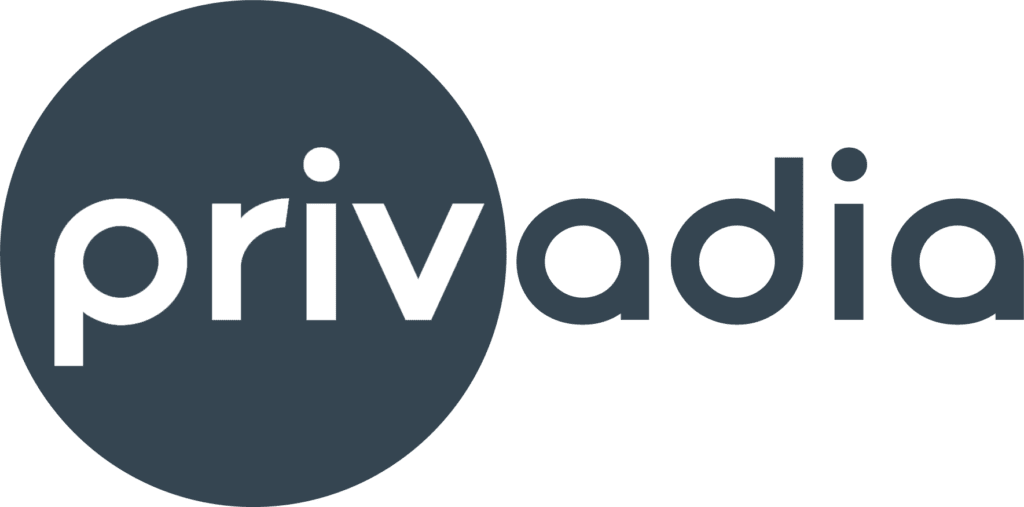For our latest guest blog we welcome guest writer Kym Kinlin, the tech director at renowned London based digital marketing agency, Adrac. Kym walks you through the options you have when approaching SEO for villa rental websites. With many conflicting opinions online when it comes to SEO, we wanted to get an industry expert to set the record straight.
Enjoy!
SEO best practises for villa rental websites
Competition for bookings in the travel industry is more intense than ever. Online Travel Agents (OTAs) provide millions of options for consumers at just the touch of a button and according to numerous studies, brand loyalty is on the decline. Add in the growing trend for independent bookings, the impact of technology such as mobile search and declining organic reach across social media platforms like Facebook and you might be feeling that it’s almost impossible to drive traffic to your villa rental website and stand out from the crowd.
Fortunately, there’s actually a whole lot you can do, starting with your own villa rental website’s SEO. Search is still a major driver of traffic to websites and this is especially true of travel sites.
The 2017 e-commerce KPI benchmark study conducted by Wolfgang Digital analysed 143 million travel and retail website sessions between 01 July 2016 and 30 June 2017. It confirmed that organic search accounts for a higher percentage of website visits and revenue than any other digital marketing tactic including PPC or social media marketing. Almost half (45%) of travel brands’ site traffic was found to come from organic Google searches compared to just 18% from PPC ads and 20% from direct visitors.
Organic Google search was also the best revenue driver of all sources, accounting for 41% of income for travel sites. The bottom line is that if you want to grow your bottom line, you need to focus on improving your villa website’s SEO. Try these SEO best practises for travel brands to do just that.
Adopt a mobile-first mindset

Google has made no secret of the fact that 2018 will be the year that it changes its default search index from desktop to mobile. This means that in order to rank well in the search results pages, you’ll need to adopt a clear mobile-first mindset, beginning with a well-built, responsive website.
If your villa rental site is already responsive, you won’t need to make any major changes to the structure as per Google’s most recent mobile index update but you will still need to check that you’re adhering to mobile best practice. Chief among these considerations are ensuring you’re using AMP where appropriate, that images, text and videos are both indexable and crawlable, that you’re using structured data where possible and that you have fully tested and optimised your mobile page loading times.
Page loading times, in particular, are crucial as the search engine has confirmed that this will become a mobile ranking factor from July 2018. If your pages are slow to load on mobile devices (perhaps because images aren’t compressed enough for example), you may well find that not only will your search positions suffer, you’ll also suffer from a higher bounce rate. Research by Google-owned Double Click confirms that 53% of users will abandon a page if it takes longer than three seconds to load. You can use PageSpeed Insights to test your page load speed and access recommendations for improvements.
A note of caution here – while mobile is critical for strong SEO performance, 94% of travellers will switch between devices when researching or booking a trip. Travellers are increasingly booking on mobile devices (31% of leisure travellers say they have completed a travel booking on a smartphone) but desktop bookings still count. This means you’ll need to take a balanced approach to SEO.
Review your page titles, H1 tags and meta descriptions
It’s common knowledge that meta descriptions are not an SEO ranking factor but, they are often used as the search snippet which means they can act as a call to action for search engine users. Review your meta descriptions and ensure they are relevant and descriptive, contain a keyword and do not exceed 300 characters, as advised by Moz.
Your page title, especially your homepage title, is prime SEO real estate. Again, you’ll need to check that your title is descriptive, relevant, unique and not too long. Anything over 60 characters will be truncated in the search results.
H1 tags are important for both Google and your site visitor. Much like the title tag, the H1 tag should be specific, unique and relevant to that particular page.
On your villa pages, your H1 tag, page title and meta description should be specific to the property itself and describe the villa and its location. This is useful for both Google and the search user. For example, it’s better SEO to use “5 bedroom villa with pool to rent in Cala Llonga, Ibiza” as your H1 tag than “Rent this beautiful Ibiza villa”.
Check your URL structure
Your villa rental website will also need an SEO-friendly URL structure; this is something that is easily overlooked, especially if you haven’t completed an SEO audit previously or prioritised your website as a distribution channel.
Your page URLs are the building blocks of your site and must consider both usability and accessibility. They’re one of the very first things that search engines encounter when they crawl your site, making it well worth putting time into getting them right.
You’ll need to use common sense here. Before you review your URLs, arm yourself with a list of keywords and commit to a consistent URL structure to be used site-wide. This should be easily replicated when new villas are added or other pages created.
Your first point of order is to include keywords in your URL, descriptive of the villa the page relates to. Beware though; having superfluous words and characters is something to be avoided. Don’t use special characters and ensure you are using a hyphen where a space would sit.
With this checklist, you should end up with URLs that look more like this:
www.myvillas.com/ibiza/5-bedroom-villa-with-pool-to-rent-in-cala-llonga/ than this: www.myvillas.com/?property_id=543.
This guide to creating SEO-friendly URLs is worth referencing if you have a particularly large villa rental site, use dynamic URLs or canonicals.
Create unique property descriptions
We’ve all heard the phrase content is king – it’s one of those SEO-isms that is often trotted out but the reason that it’s stuck around so long is that it’s tried and tested.
While it may seem unnecessary to take the step of rewriting the property descriptions your villa owners or agents provide, it has two key benefits that easily make the business case for the budget and time investment.
The first comes from an optimisation perspective. If you simply copy and paste the content that you’re given, chances are it’s duplicated elsewhere. This single factor can make it virtually impossible for you to achieve strong rankings for that particular page, especially if you’re a new agent for the property and other, older pages from more established domains are already using that same text elsewhere.
Unique content is a cornerstone of search engine optimisation – not only is duplication likely to negate indexing, text prepared by someone else will not reflect your own keyword strategies.
A second reason to rewrite villa descriptions is to ensure that the tone of voice is an accurate reflexion of your own brand identity. By creating your own version, you can weave through your own keywords and USPs, create content that is consistent with your own style of communication with clients and includes your chosen calls to action.
Have a clear content marketing strategy
Continuing on the content is king theme, creating (and executing) a content marketing strategy should form a key part of your SEO best practise actions. Some SEO practitioners go as far as to say that search engine optimisation is all about content.
Content is the driving force behind link acquisition, which is itself a crucial SEO currency. The more good quality links you obtain from relevant, authoritative sources, the better your search engine rankings will be. Killer content is far and away the most effective (and easiest) way of building a strong link profile.
Creating killer content goes far beyond a basic blog every now and again though. It’s also a lot harder than it sounds – according to the 2017 Meaningful Brands study, 60% of all content produced by brands globally is considered clutter. Creating meaningful content takes more time and effort but the reward is an average of 9 x increase in share of wallet. To ensure your content is SEO effective, resonates with audiences and generates valuable links, you should:
- Focus on content which is interesting, educational, informative and useful
- Vary content formats to include listicles, white papers, podcasts and videos (with transcripts), shorter and long form blogs
- Use tools such as Google Trends to identify emerging search terms relevant to holiday villas
- And research which article topics generate most links, likes and shares by conducting content research on BuzzSumo
- Ensure your new content is optimised for a specific, relevant keyword, using a plug-in such as Yoast to measure optimisation rating
Create region-specific landing pages

As part of your content creation process, consider creating specific landing pages for particular regions. These pages should be populated with useful, relevant information, a clear, user-friendly design and have links through to relevant properties. An easy way to structure this would be to have an interactive map of the island of Ibiza, with each area (such as Ibiza Town or Playa d’en Bossa) linked to its own area guide. Within that page you may include shopping tips, nightlife recommendations, images curated from social media or restaurant reviews.
In addition to being a useful resource for site visitors, this also provides more pathways into the site for web traffic, creates content ripe for link acquisition and gives more indexable pages for search engines.
Airbnb’s neighbourhood guides are a prime example of how successful this type of area guide can be. It has published 23 neighbourhood guides to date, each a substantial piece of content focusing on a particular area. Within each guide, visitors can find local loves, curated likes and dislikes and profiles of local hosts. They’re a master class in creating optimised content and well worth studying for inspiration.
Make sure all content is readable by search engines
While search technology is evolving at a lightning pace, search engine spiders are still limited in their capability. As mathematical algorithms, they can only read physical text so aim to have all text on your page readable by search engines. Text as images (such as within banners) can’t be read or understood by search engines so won’t contribute to your villa website’s SEO. Where you do have images on site, ensure you also input descriptive ALT tags to tell the search engine what occupies the image.
Test for broken links
While a 404 page not found error might seem like a mild inconvenience, broken inbound and outbound links can be very costly from an SEO perspective. A broken link on your site will make it hard for Google’s spiders to crawl your site – this can impact the number of pages indexed and affect your search positioning. From a user perspective, a visitor arriving to a broken link is likely to hit the back button or return to Google and try a competitor, meaning you’ll also see a spike in your bounce rates.
A number of tools are available to make the process of checking for broken links easier. Try Screaming Frog SEO Spider or Google’s Crawl Errors report in Search Console for a list of pages the search engine is having problems accessing.
Set up Google Search Console and Google Analytics

Google provides a number of free tools which provide lots of insight for webmasters. Setting up Google Search Console for your domain will give you a much clearer idea of how Google sees your site and provide alerts and support if something’s wrong.
Likewise, Google Analytics will provide the data you need to fine tune your site’s SEO. You can use the numerous Analytics dashboards and custom report functionality to carry out actions such as evaluating content performance, pinpointing pages with higher bounce rates, tracking visitor journeys, device types and referring traffic sources.
Switch to HTTPS
We’ve known since 2014 that using HTTPS rather than HTTP could give sites a ranking boost. Google stepped up its preference for HTTPS in August 2017, when it began to email webmasters warning them that non-secure HTTP sites would need to be migrated to HTTPS by 20th October or risk losing traffic and having a ‘not secure’ warning flagged up to Chrome users when entering text in a form on a HTTP site.
Any of your site pages where customers are required to input text (such as villa enquiry forms) should be hosted on HTTPS.
Check your sitemap
A sitemap is a Google spider’s blueprint of your site, showing it how all pages interconnect and where they are located. Make sure you have an up-to-date sitemap, which includes all static and property pages on site and registered with Google via Search Console.
If your site runs on a platform such as WordPress, a number of plug-ins are available which will automatically update your sitemap as new pages are created.
Your to-do list
Check off each of these items to ensure your villa site is confirming to SEO best practice:
- Review your page titles, H1 tags and meta descriptions
- Check your URL structure
- Create unique property descriptions
- Have a clear content marketing strategy
- Create region-specific landing pages
- Make sure all content is readable by search engines
- Test for broken links
- Set up Google Search Console and Google Analytics
- Switch to HTTPS
- Check your sitemap




